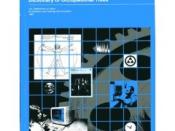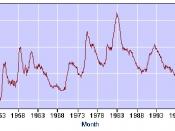Introduction
The VP of CCLM is meeting with the management group . . .
"We actively use Workforce Management and Scheduling to keep data about our employees and ensure that our Quality of Service measures are met. We should all be pleased with the improvements in quality and performance we have made due to our Quality Monitoring Program. Service is more consistent and productivity has improved by several percent.
But we seem to be missing something. There are still a high degree of errors, causing customer issues and call-backs. Also, our efficiency has improved, but I think there's more room for improvement.
I have noticed that we seem to have an awful lot of new employees in our training courses. Does anyone have good data on the job retention rates?"
At this point in the meeting, the operations senior manager looks up,
"Our hourly employees' turnover is high. As far as we can tell, we lose a quarter of our new hires within the first few months and up to half by six months.
We know that our turnover rate is 25%. We also know that a typical employee doesn't reach full productivity until they have worked at least six months. This means there is always a major portion of the employees who are not at full productivity."
The primary objectives of this study are to explore the reasons behind hourly employee turnover and to explore variables that would assist in predicting employee retention in the company.
We as a Human resources management believe that the operations management claim is too high, and the proportion turnover is less than 25% and it is still within the acceptable rate that reported by the "Bureau of Labor Statistics of the U.S. Department of Labor" of 17%.
However, we decided to conduct a...
![English: United States mean duration of unemployment 1948-2010. Data source: FRED, Federal Reserve Economic Data, Federal Reserve Bank of St. Louis: Average (Mean) Duration of Unemployment [UEMPMEAN] ; U.S. Department of Labor: Bureau of Labor Statistics;](https://s.writework.com/uploads/3/35750/english-united-states-mean-duration-unemployment-1948-2010-d-thumb.jpg)

